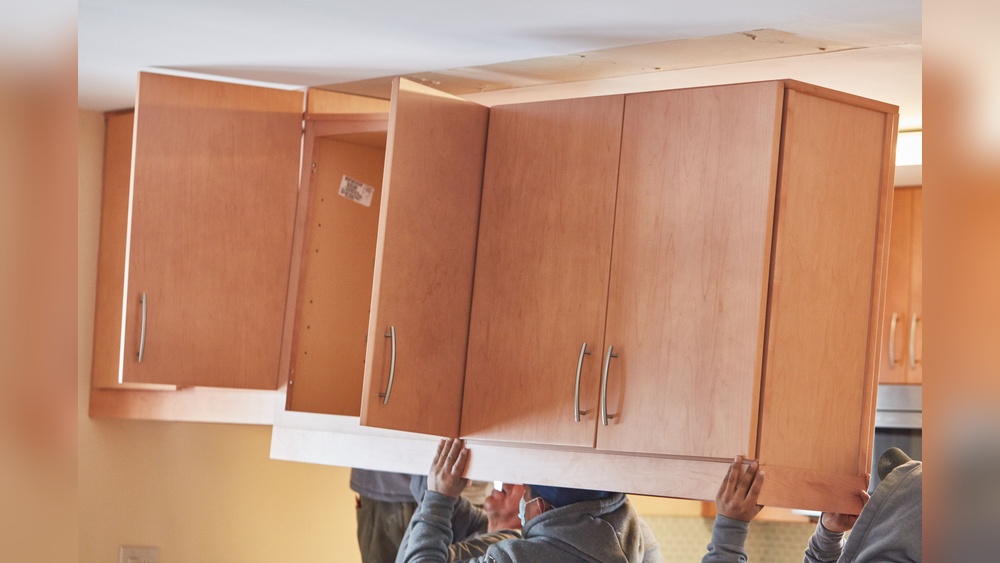Thinking about updating your kitchen or tackling a renovation project? One of the first—and often most intimidating—steps is removing your old kitchen cabinets.
But here’s the secret: you don’t need to be a professional to do it right. With the right approach and a few simple tools, you can remove your kitchen cabinets safely and efficiently, saving time and money. In this guide, you’ll discover clear, easy-to-follow steps that will take the guesswork out of the process.
Ready to take control of your kitchen makeover? Keep reading, and let’s get those cabinets down the easy way.
Tools And Materials
Essential tools include a drill, screwdriver, pry bar, and hammer. A drill helps remove screws quickly. Screwdrivers are useful for tight spots. Pry bars gently separate cabinets from walls without damage. Hammers assist in loosening nails or stuck parts.
Safety gear is very important. Wear safety goggles to protect your eyes from dust and debris. Use gloves to keep your hands safe from sharp edges and splinters. A dust mask can help avoid breathing in dust particles.
Additional supplies might include a drop cloth to catch debris and protect floors. Have a bucket or container ready to hold removed screws and nails. Use painter’s tape to mark cabinet parts or protect nearby surfaces during removal.
:max_bytes(150000):strip_icc()/how-to-remove-kitchen-cabinets-8304279-hero-30b6ec50f04347ea8ef6dd85178cab25.jpg)
Preparing The Kitchen
Remove all items from cabinets and countertops. This makes the space clear and safe. Cover floors and counters with old sheets or drop cloths. Protects surfaces from dust and scratches.
Turn off power and water supplies before starting. This prevents accidents while removing cabinets. Unplug any appliances near the work area. Safety first.
Removing Cabinet Doors And Drawers
Unscrew hinges carefully using a screwdriver. Keep screws in a small container to avoid losing them. This step helps separate cabinet doors from the frame easily.
Take out drawers by pulling them straight out. Some drawers have clips or stops inside; press or lift these to remove the drawer fully. Handle drawers gently to avoid damage.
Label components such as doors, hinges, and screws. Use masking tape and a marker. This makes reassembly easier and saves time later.
Detaching Wall Cabinets
First, locate the fasteners holding the wall cabinets. These are usually screws at the cabinet sides or back.
Place a strong support under the cabinet to hold its weight safely before removal. This prevents accidents and damage.
Use a screwdriver or drill to unscrew the cabinets carefully. Remove all screws from the sides and top.
Some cabinets might be glued to the wall. Gently pry them loose using a putty knife or pry bar. Work slowly to avoid damage.
Removing Base Cabinets
Clear all items from the countertops to avoid damage. Remove any screws or fasteners that hold the base cabinets to the wall. These are usually found inside the cabinet frame and at the top near the countertop. Use a screwdriver or drill to unscrew them carefully. After removing fasteners, gently lift the cabinets. It helps to have another person assist because cabinets can be heavy. Lift straight up to avoid scratching the floor or walls. If the cabinet sticks, check for hidden screws or nails and remove them. Place the cabinets on a soft surface to prevent damage.

Dealing With Stubborn Cabinets
Removing nails and glue can be tricky. Use a claw hammer or a nail puller to gently pull nails out. For glued areas, apply heat with a hairdryer to soften the glue. Be patient and work slowly to avoid damage.
Using pry bars safely is important. Place a thin wooden block between the pry bar and wall to protect the surface. Apply slow, steady pressure to avoid breaking the wall or cabinet. Keep your hands clear to prevent injury.
Preventing wall damage requires care. Cover the floor and nearby surfaces with a drop cloth. Remove screws before prying to reduce force needed. Patch small holes with spackle and sand smooth after cabinet removal.
Post-removal Cleanup
Clear away all debris like screws, nails, and broken cabinet parts. Use a broom or vacuum to remove dust and small pieces from the floor. Proper disposal keeps your workspace safe and clean.
Check walls for damage after cabinet removal. Fill holes or cracks with spackle or putty. Sand the surface smooth once dry. This step ensures walls look good and are ready for painting.
Remove any leftover adhesive or nails to prepare for new cabinets. Use a level to confirm walls are even. A clean, flat surface helps new cabinets fit properly without gaps or tilting.

Tips For A Smooth Project
Working with a partner makes removing cabinets easier and safer. One person can hold the cabinet steady while the other unscrews it. This teamwork helps prevent damage and injury.
Take your time to avoid mistakes. Rushing can cause broken wood or stripped screws. Carefully remove screws and nails one by one. Pay close attention to glued spots that might need extra effort.
Keep all hardware organized. Store screws, hinges, and handles in labeled containers. This helps when reinstalling or recycling parts. A simple box or small jars work well for sorting.
Frequently Asked Questions
Can I Remove Kitchen Cabinets Myself?
Yes, you can remove kitchen cabinets yourself with proper tools and support. Unscrew cabinets carefully, supporting weight to avoid damage. Check for glue, which complicates removal and may cause wall or cabinet damage. Take safety precautions and plan for wall repairs after removal.
Are Kitchen Cabinets Glued To The Wall?
Kitchen cabinets usually attach to walls with screws or nails into studs. Glue may be used in custom or unitized cabinets but is less common. Glue can make removal harder and risk wall damage. Standard installations rely mainly on mechanical fasteners for secure mounting.
How Do You Remove Cabinets Without Damaging Walls?
Use a utility knife to cut caulk or paint seals around cabinets. Unscrew all visible screws securing cabinets to wall studs. Support cabinets from below to prevent sudden drops. Gently pry cabinets away using a putty knife or crowbar, minimizing wall damage.
Patch any small wall holes afterward.
How Much To Remove Old Kitchen Cabinets?
Removing old kitchen cabinets typically costs between $150 and $500, depending on size and labor rates. DIY removal saves money but requires time and tools. Professional removal ensures safety and prevents wall damage. Costs vary by location and cabinet complexity.
Conclusion
Removing kitchen cabinets takes patience and care. Start by turning off power near the cabinets. Support upper cabinets before unscrewing to avoid accidents. Use the right tools to remove screws and nails safely. Take your time to prevent wall damage.
Check for any glue or adhesive holding cabinets in place. Clean the area well after removal. This process prepares your kitchen for new installations or repairs. With these simple steps, you can handle cabinet removal confidently and safely.

Yes, working as , Food Blogger and Product Reviewer for last 6 years. Here you will get amazing deals for Smart kitchen products. I am your best source for the latest update in cooking trends. I provide insightful articles, reviews, and analysis on cutting-edge kitchen gadget. My mission is to empower readers with the knowledge they need to stay ahead in a rapidly evolving coking world. Join me as we explore the future of food technology and how it shapes our lives today and tomorrow.





